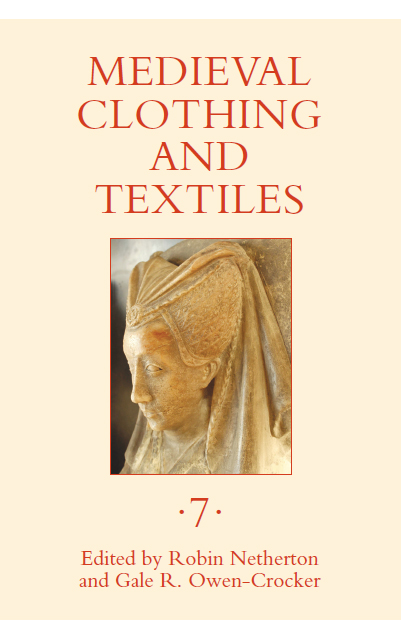Book contents
- Frontmatter
- Contents
- Illustrations
- Tables
- Contributors
- Preface
- The Empress’s New Clothes: A Rotulus Pannorum of Isabella, Sister of King Henry III, Bride of Emperor Frederick II
- Unveiling Social Fashion Patterns: A Case Study of Frilled Veils in the Low Countries (1200–1500)
- What Is the Pearl-Maiden Wearing, and Why?
- “Hys surcote was ouert”: The “Open Surcoat” in Late Medieval British Texts
- London Merchants’ Cloth Exports, 1350–1500
- Laboreria Sete: Design and Production of Lucchese Silks in the Late Fourteenth and Early Fifteenth Centuries
- Recent Books of Interest
- Contents of Previous Volumes
Laboreria Sete: Design and Production of Lucchese Silks in the Late Fourteenth and Early Fifteenth Centuries
Published online by Cambridge University Press: 18 February 2023
- Frontmatter
- Contents
- Illustrations
- Tables
- Contributors
- Preface
- The Empress’s New Clothes: A Rotulus Pannorum of Isabella, Sister of King Henry III, Bride of Emperor Frederick II
- Unveiling Social Fashion Patterns: A Case Study of Frilled Veils in the Low Countries (1200–1500)
- What Is the Pearl-Maiden Wearing, and Why?
- “Hys surcote was ouert”: The “Open Surcoat” in Late Medieval British Texts
- London Merchants’ Cloth Exports, 1350–1500
- Laboreria Sete: Design and Production of Lucchese Silks in the Late Fourteenth and Early Fifteenth Centuries
- Recent Books of Interest
- Contents of Previous Volumes
Summary
It is ironic that information on the nature of the silk fabrics produced in Lucca is comparatively sparse for the thirteenth century, when the industry was at the height of its prosperity, whereas for the late fourteenth and early fifteenth centuries, when the industry is generally agreed to have been in difficulties, information is much more abundant. For the thirteenth century there are numerous contracts for the sale and purchase of silk and the manufacture of silk cloth in the notarial records, and Lucchese silks are listed in inventories in Italy and Northern Europe, but these do not provide much information about the fabrics themselves. For the late fourteenth and early fifteenth centuries much more detailed information is available about the nature of the fabrics being produced, including the various silks and dyes used, the lengths and widths of cloths, and the relative values of different types of silk and silk fabric, not to mention the conditions of trade in both raw materials and finished cloths. This article seeks to discuss Lucchese silk production in the late fourteenth and early fifteenth centuries on the basis of sources that are not available for earlier periods.
The most important of these are the Libri de’ Sensali, or brokers’ books. The function of sensals was to arrange wholesale transactions between buyers and sellers. Their records had official status and provide information that is reliable and often enormously detailed. The earliest surviving volume is for 1409, and there are five others, for 1413, 1417, 1423/4, 1453–68, and 1475–82. This article will concentrate on the volume for 1409, partly because it is the earliest, but partly because it is the only one that coincides with an extant volume of the Gabella Maggiore, or customs accounts. It can also be read in conjunction with the declarations of companies, partnerships, and employees of 1407. However, the most useful volume of the Court of Merchants, apart from the Libri de’ Sensali, is the Statute of the Court authorised in 1376, with some later additions. This lays out the regulations for the operation of the Court and the various trades that came under its supervision and, most important in the present context, the requirements that had to be met for the manufacture of various types of silk cloth.
- Type
- Chapter
- Information
- Medieval Clothing and Textiles 7 , pp. 141 - 168Publisher: Boydell & BrewerPrint publication year: 2011

